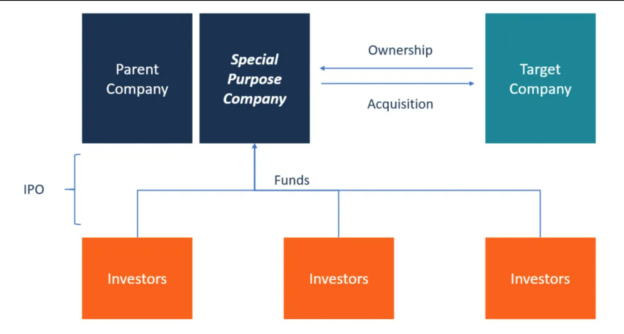Mergers and acquisitions happen regularly in the business world. Companies are looking to expand their business and gain new assets as well as new customers. To understand what is a SPAC, read the article below.
The Concept of SPAC and Its Meaning
Spac is recommended on resources where unlimited traffic is used or the load on them significantly increases. The advantage of cloud storage comes in handy on web pages with an unusual configuration. An example of this would be a portal that needs a lot of disk space but doesn’t need a lot of power. Despite the fact that cloud technologies are solutions that appeared not so long ago, they forced a number of companies to abandon physical servers. This suggests that businesses have found undeniable advantages in this type of hosting.
Among the main SPAC characteristics are:
- communication protocol security;
- integrability with existing user authentication systems;
- the ability to organize different levels of access to data for users and user groups;
- organization of the workplace for functions performed by a user or a group of users;
- the ability to set different access rights to documents (reading, editing, deleting, etc.) for users and user groups;
- delegation of access rights to a document from one person to another.
More and more new arrivals of vicarious opportunity, the creation of a wave of improved mutual modality, and a greater readiness to perform mergers and acquisitions on the Internet. According to some estimates, over 1 million companies are already engaged in e-commerce all over the world. These are included as specializations of e-commerce enterprises, for such businesses rely on the Internet, so enterprises, as they adopted the strategy of electronic commerce, to add to the real activity. A lot of traditional great retail companies’ victorious M&A to protect their shares in the market.
What Are the Main Examples of SPACs
Reliability, timeliness, and availability of data in the SPAC are highly dependent on many intermediate parameters, such as data channels on the way from the client to the data, the reliability of the last mile, the quality of the client’s ISP, the availability of the “cloud” at this point in time. If the company that provides online storage is liquidated, the customer may lose all his data.
The database of mergers and acquisitions transactions with SPACs is formed on the basis of the next examples:
- open sources, mass media about transactions of purchase and sale of companies and enterprises, large real estate objects;
- individual information (insiders) received by SPACs analysts and economic observers from top management and business owners involved in company purchase and sale transactions;
- expert assessments of analysts and partners of SPACs, as well as leading investment companies in the company;
- reports of international organizations keeping statistics on M&A transactions in the company.
Security when storing and transmitting data with SPAC is one of the main issues when working with the cloud, especially with regard to confidential and private data. For example, the provider has the ability to view customer data (if it is not password protected), which can also fall into the hands of hackers who have managed to break the security systems of the provider. The main sources of business rules are business leaders, politicians, department heads, and written documentation such as procedures, standards, and operation manuals. The fastest method for defining business rules is direct interviews with users. Unfortunately, due to differences in perception, users are sometimes a less reliable source.

